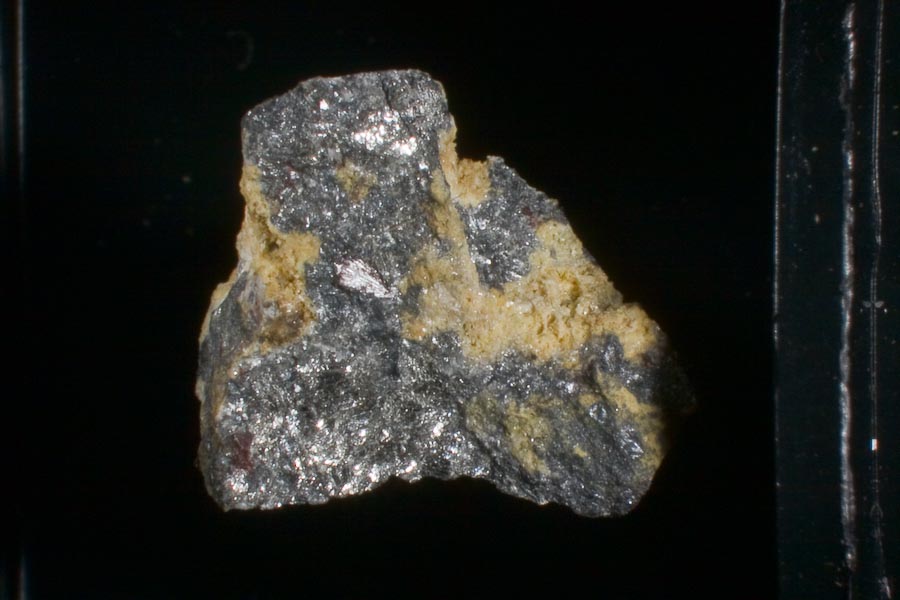Specimen #961
Name: Kermesite on Antimony
Type: Micromount
Locality: Sonora, Mexico
Favorite? N
Fluorescent? N
Size:
Weight:
Acquired: 2008-11-17
Source: Ian Heales Collection
Label: N
Comment: Problematic identification, as Kermesite is supposed to be distinctively red.
Name from kermes, a name given from the Persian qurmizq, "crimson" in the older chemistry to red amorphous antimony trisulphide, often mixed with antimony trioxide. Kermesite is an unusual sulfide mineral. A close look at the formula can confirm this. There is an oxygen nested between two antimonies and two sulfurs. Kermesite, it turns out, is an intermediate oxidation product between stibnite whose formula is Sb2S3, and various antimony oxides such as senarmontite, Sb2O3; valentinite, also Sb2O3; and stibiconite, Sb3O6(OH). Stibnite when exposed to oxygenated fluids under the right conditions will slowly transform into kermesite as the an oxygen replaces one of the sulfurs in the formula. Usually the oxidation is completed to the point that the sulfurs are completely replaced by oxygen, but in some rare cases the oxidation stops short and forms kermesite. This is fortunate for mineral collectors!
Kermesite is a truly colorful mineral. Its bright red color has been described as a cherry red and that is pretty accurate. The color is caused by the stibnite and is therefore inherent in the mineral. Alternate names or nick-names for kermesite have been used such as red antimony, purple blende and a non-colorful nick-name antimony blende.
Minerals:  Antimony (Sb)
Antimony (Sb)  Kermesite (Sb2S2O)
Kermesite (Sb2S2O)
There is one picture on file
M00961-01.jpg:

Kermesite on Antimony, Sonora, Mexico - FOV: 18.0 x 12.0 mm